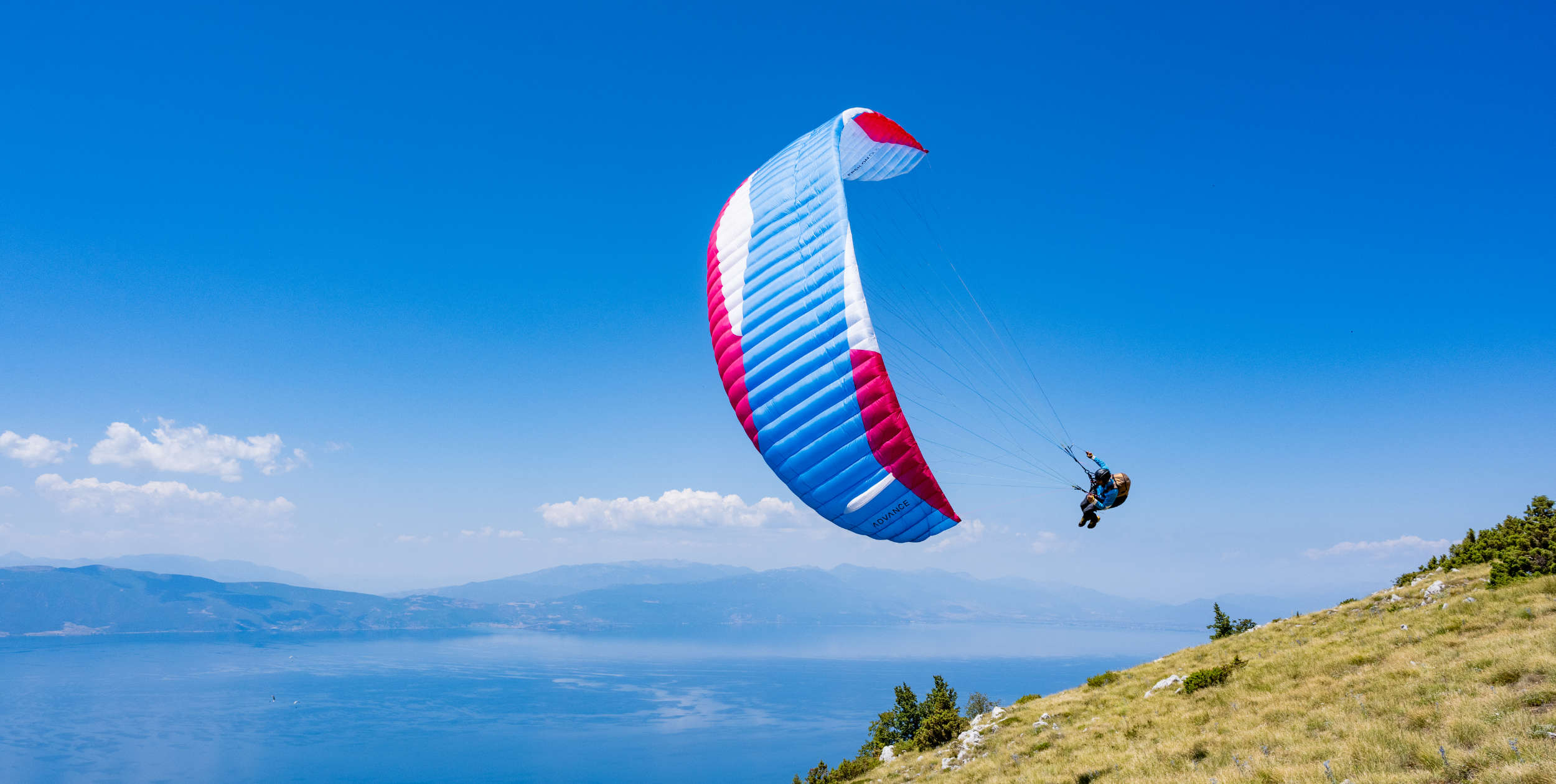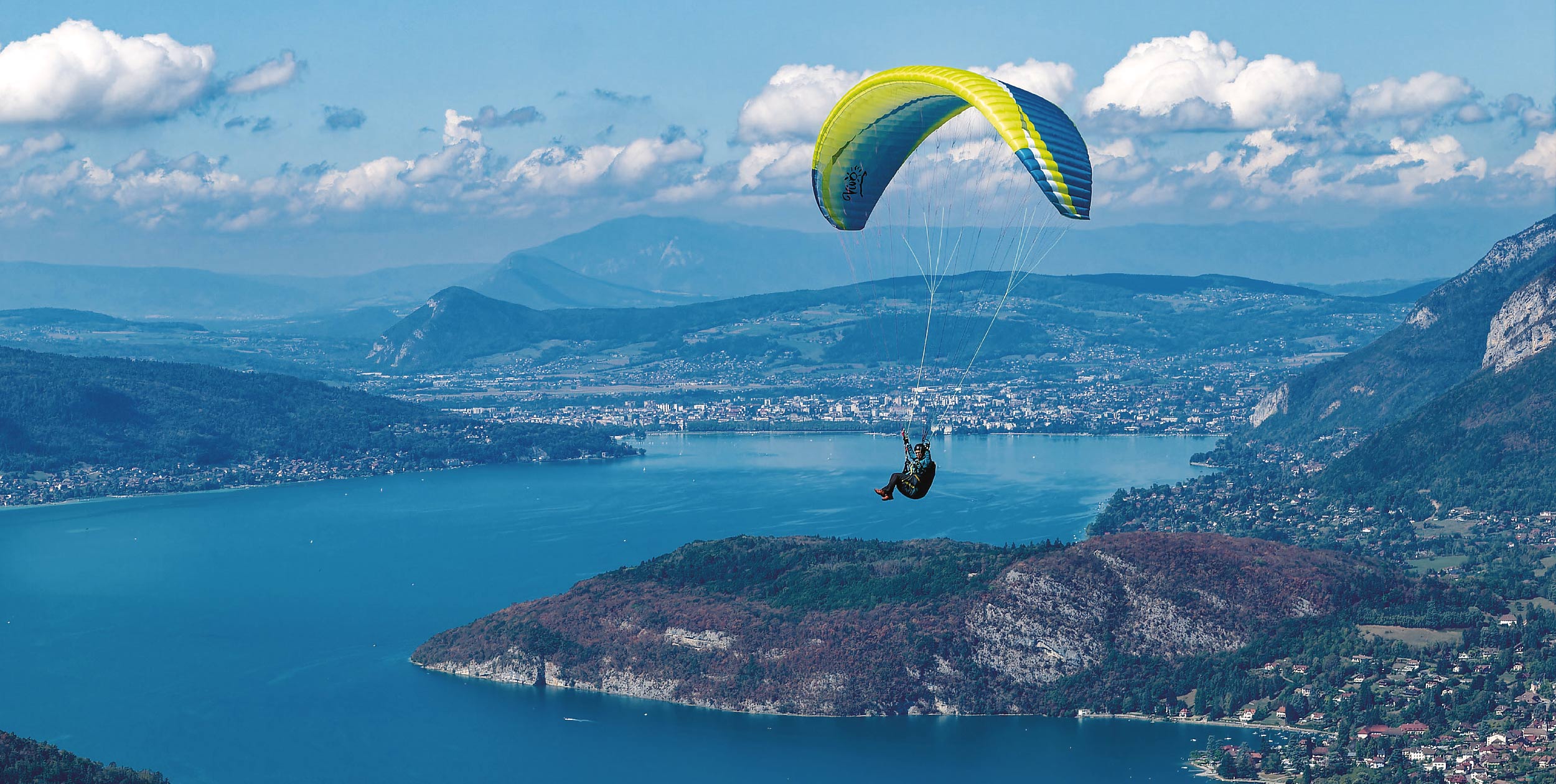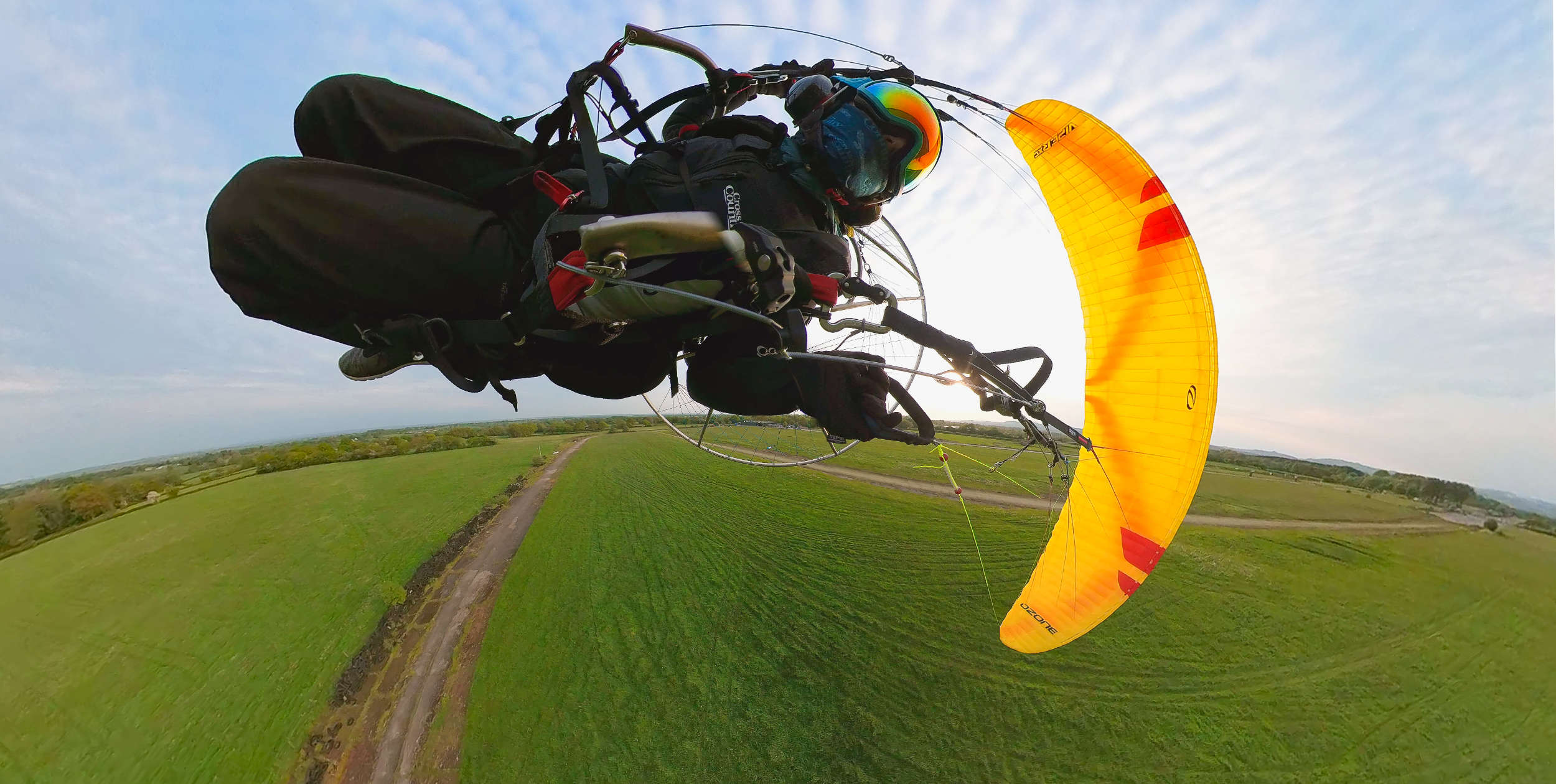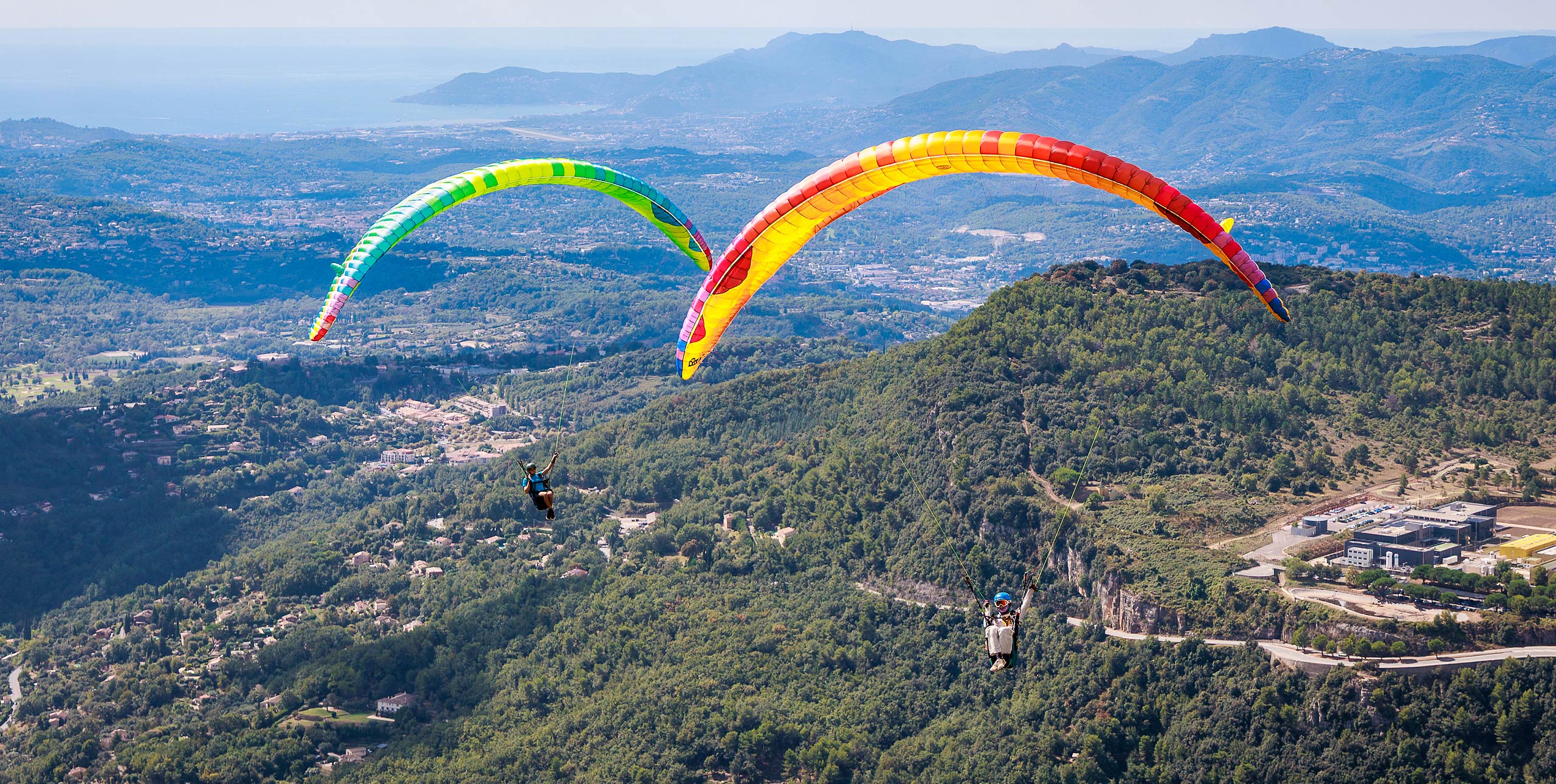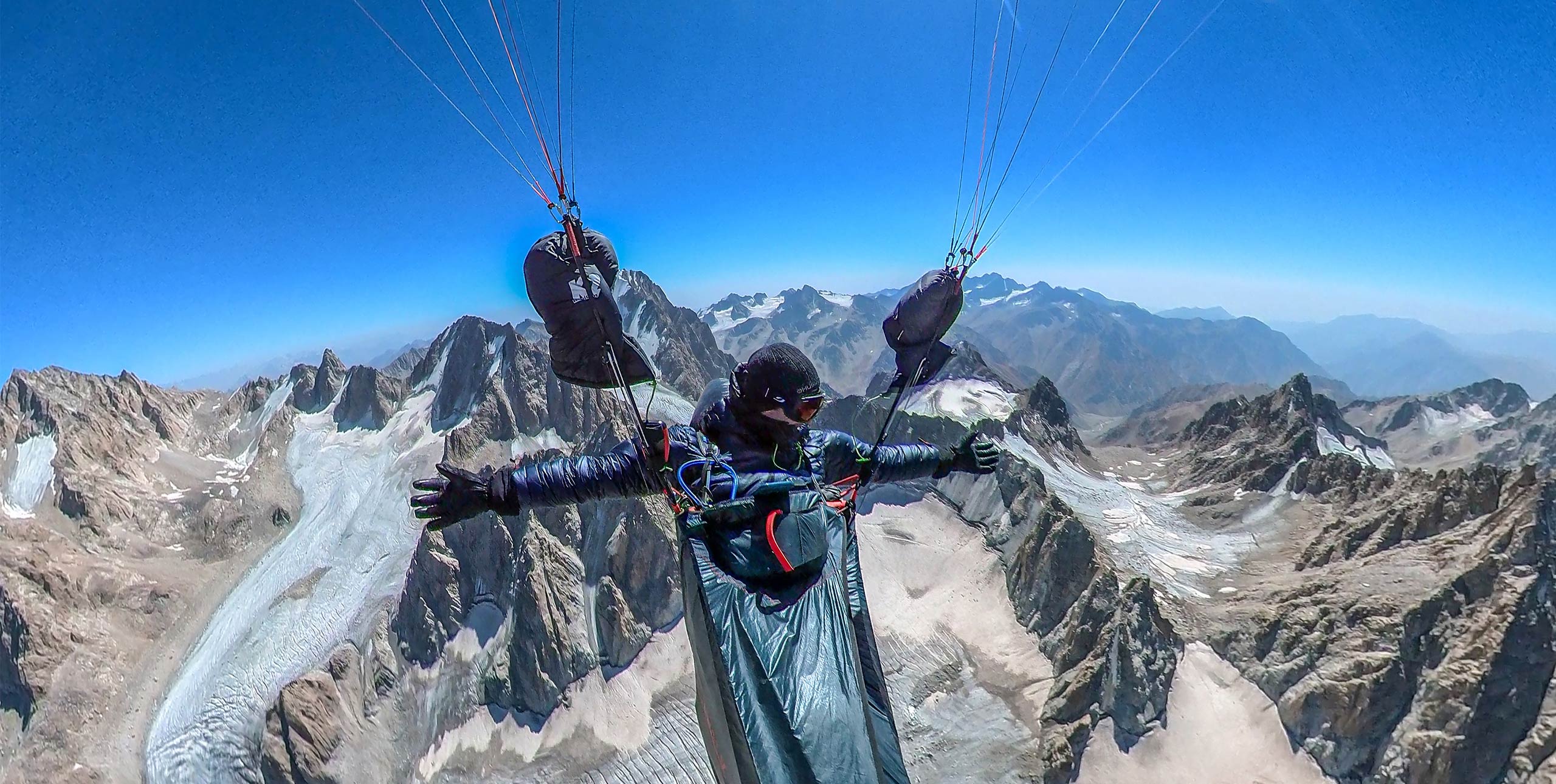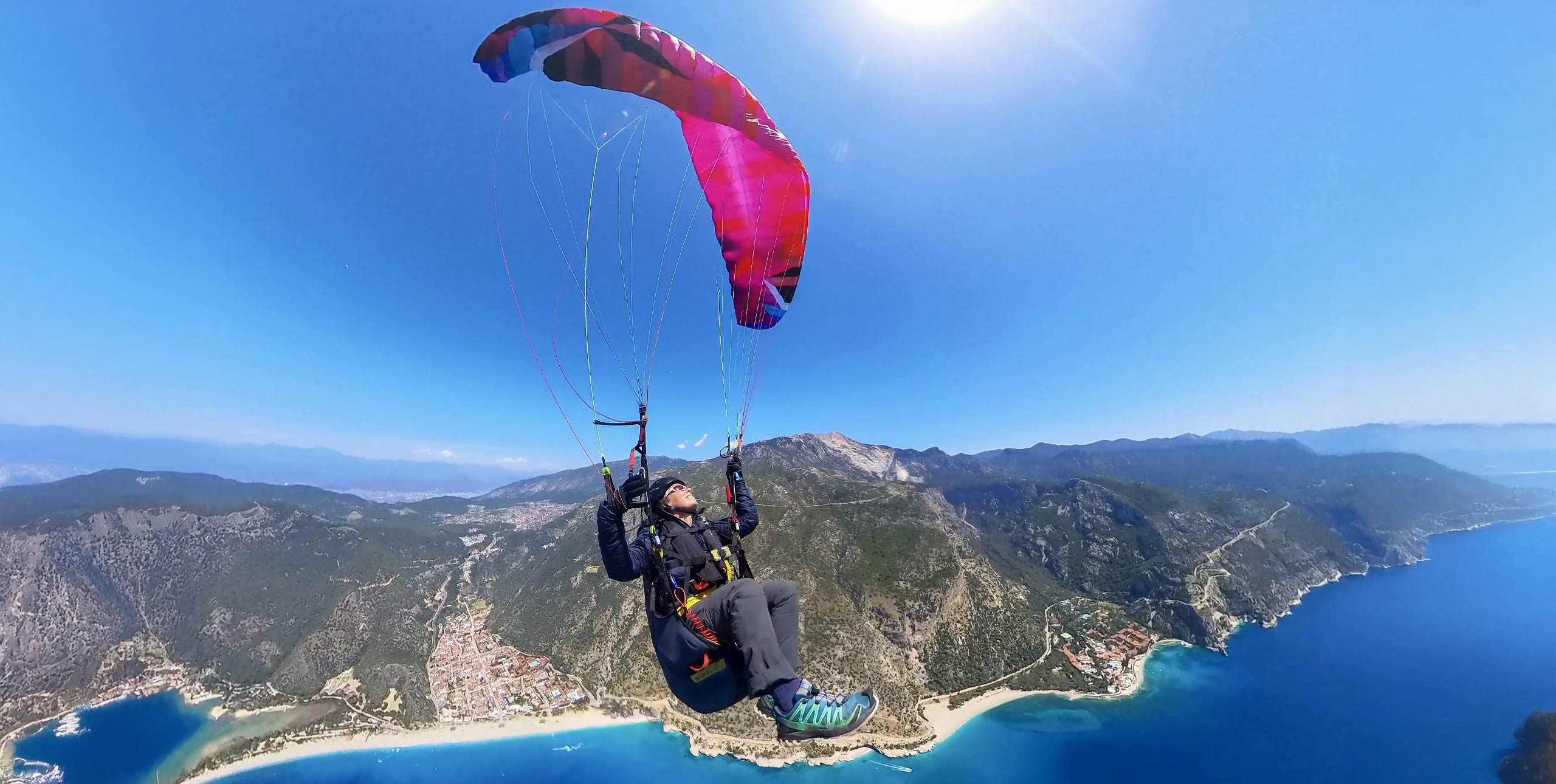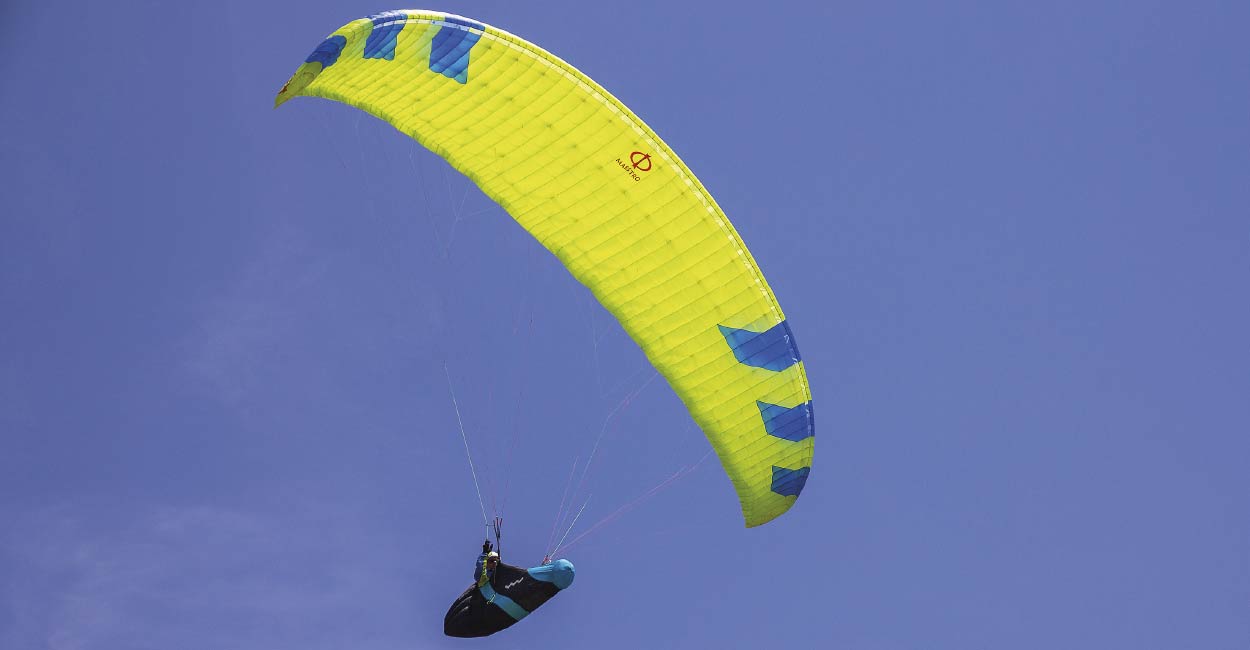
Legendary designer Hannes Papesh has finally unveiled his new high EN B. Marcus King grabs it and runs
Phi designer Hannes Papesh is well known for his high EN-B wings. Most famously he helped kickstart the EN B+ revolution when he was designing for Nova almost 10 years ago. At the time he made bold claims about the then-new Mentor 2 (EN B), saying it could out-perform several EN D wings at top speed. He backed up those claims with a glide test at the Coupe Icare, where he was very publicly proved correct – at full speed the Mentor 2 out-glided the Advance Omega 8 on full speed. Jaws fell across the paragliding world.
When I reviewed the Mentor 2 it wasn’t just the performance that impressed. “We get performance plus agile, direct handling without any loss of safety,” I wrote.
Hannes followed the Mentor 2 with the Mentor 3, but then his involvement with that famous series stopped. He moved on from Nova to work with Advance for a bit, before setting up his own company, Phi, in 2017.
All this is by way of saying that Hannes is now back with a design in his favourite class: the high EN B Maestro.
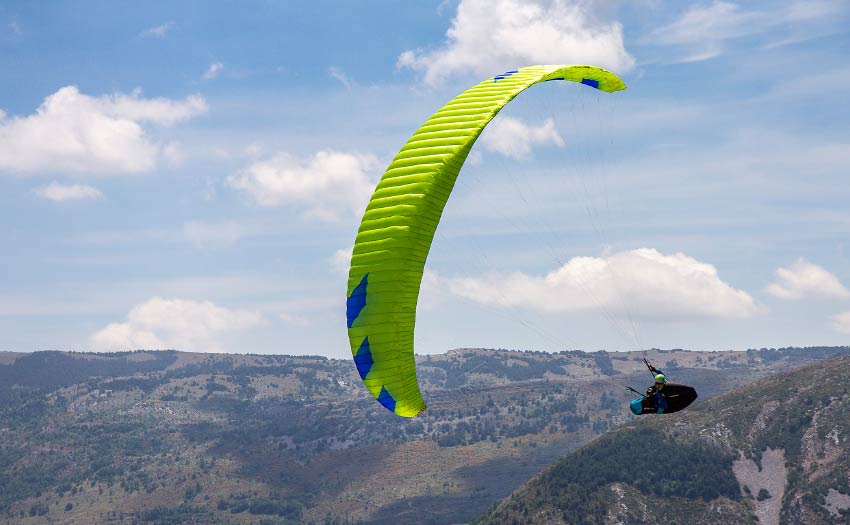
First look
Shaking the wing out on launch the first thing you’ll notice is that the look of the Maestro is distinctive, with a solid and slightly retro colour scheme. It’s not super-aspecty – it has an aspect ratio of 5.56, only moderately more than the original Mentor 2 (5.43) and the same as the Ozone Rush 5; and much less than the likes of the Gin Explorer, UP Kangri and U-Turn Vision (all EN Bs).
The sail is made completely from Skytex (32g/m2 top, 27g/m2 on the bottom surface). This, along with a highly optimised internal construction, has kept the weight low. The ML size I flew has a weight range of 83-108kg (extended) and weighs just 4.75kg.
It made for a light pack when combined with my Woody Valley GTO Light (coincidentally Phi did a lot of their development flights with this harness). It’s certainly a lot lighter than the old Mentor 2 was (5.7kg) and also than the up-to-date Rush 5 (5.47kg). A lightweight X-Alps version has also been released, which further reduces the weight by over a kilo.
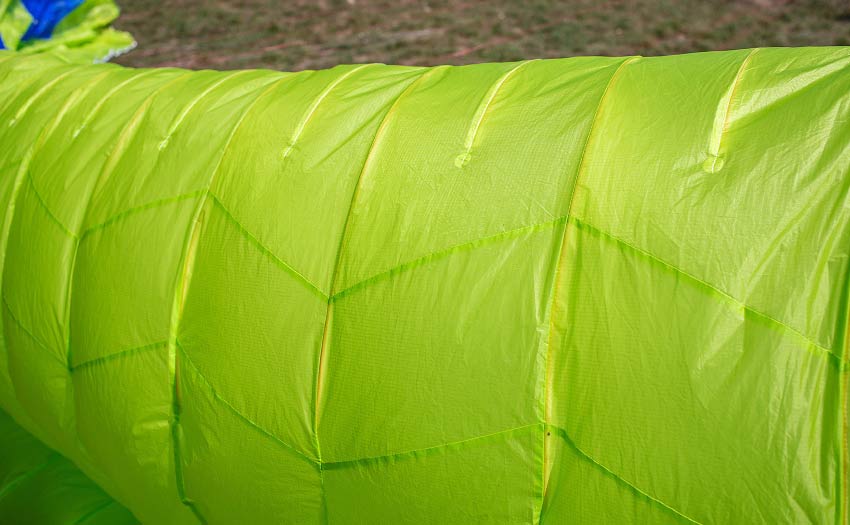
Shaping
There is a fair amount of technology visible on the wing. At the leading edge nylon rods create an air scoop (sharknose), but only one rod is used on each opening. Between the ribs there is an extra rod forming a mini-rib in the top surface to keep this important part of the profile as solid and clean as possible.
Behind these are two lines of diagonal seams for 3D shaping, designed to keep the panels crease-free. Hannes introduced this specific design to Advance wings when he was designing there. You’ll also find mini-ribs at the rear of the wing to keep that part smooth. There is also a lot of technology inside the wing, which has a complex internal structure.
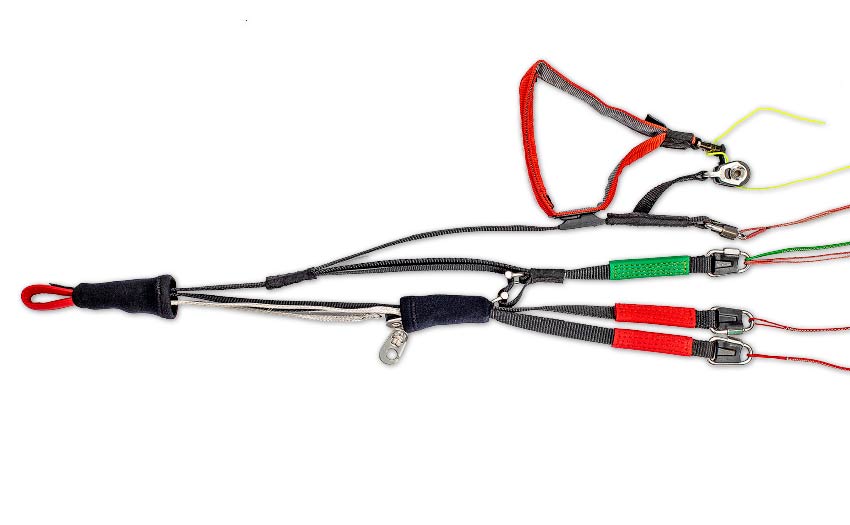
Line set
The line set is totally unsheathed, apart from the lower part of the stabilo and brake lines each side. The lines are optimised for their position in the cascade and some are pretty thin. One pilot in the landing field asked me, “Is this really an EN-B?” when they saw the lines.
It’s a three-line layout although interestingly the C-tabs are offset, so more of the wing is supported but without the need for D-tabs. The risers are sleek, with quality components and no extras such as rear-riser handles (arguably just for fashion on this level of wing). There are two optional lighter versions of the risers that can be specified if you are keen to shave the grams off, but they probably make more sense on the X-Alps version.
In the air
It’s very well behaved on launch. It comes up smoothly with no surging and doesn’t drop back too easily. The relatively low aspect ratio means it does not need a lot of management. Held in check with a small amount of brake the glider pulls forward smoothly into the air when you release the brakes.
In the air the brakes are brilliantly immediate. It takes very little movement to control it and put it where you want. Brake pressure is in the middle: not too heavy nor too light.
You can easily get the glider turning tightly in thermals using just the first part of the brake range. But this is a B, and Hannes and the team have managed to give us this efficient turning behaviour while at the same time retaining a forgiving nature if you go deeper in the brakes. If you are used to using lots of brake you might find yourself rolling a little too much, but nothing more.
There is a nice amount of feel in the brake lines. The wing seems especially efficient at sniffing out lift, if you let it. Coming into lift there is no nasty pitching; instead it smoothly pulls into the lift while climbing forward.
The wing itself is coherent and moves as one. This stability makes for a relaxing ride. I found myself really enjoying flying it using my fingertips on the top of the brake swivel for fine control and feel. It never felt like you had to be heavy handed, even in rough climbs. Those used to higher-rated wings will appreciate this, while others will soon learn to appreciate its feeling and control. With the passive safety of a B, this is a real progression wing.
Climbing
It climbs as well as the best in class or even the class above. I flew in all sorts of alpine conditions, from scratchy stable days to cranked-up in banging thermals. The wing was a joy to fly in all of them and proved to be very efficient.
Its ability to sniff out lift and climb in the lightest bubble is outstanding. As I spent more time with the wing I found it was better not to slow it up too much in the climbs: give it a bit more speed and energy and it climbs through the lumps of lift effortlessly.
On one low-cloud day I expected a sled ride to the landing. Instead I enjoyed an hour’s gentle thermalling, working every patch of lift while shade shut down launch completely.
Glide and speed
On glide the wing feels equally efficient. It doesn’t get knocked back by the bumps as you push into wind, but instead pushes into the air nicely, keeping up with all the other EN Bs and Cs.
Testing speed on our TAS probe I got 38km/h for trim speed and a consistent 53km/h on full bar – fast for this class of wing. I was flying at an all-up weight of 97kg on the ML (recommended highest weight of 103kg, but certified to 108kg).
It doesn’t feel like Phi have pushed the boundaries either as there is no sign of weakness in the nose. I flew through some pretty strong lift and convergence on bar and the wing stayed solid with no pitching about. Rear-riser control is efficient and can be used to turn the wing if needed, although there is a bit of slack in control on full bar, showing how much the weight has moved forward.
Big big-ears
Because there are only two A-lines on each side, pulling big ears results in big big-ears. They flapped around quite a lot, but a bit of adjustment can sort this out. They are efficient, especially when used with the bar, giving you more speed to get away from the lift. The ears open quickly as soon as you let go of the risers.
I induced a couple of 50% collapses and found nothing unusual. The wing quickly reinflated and was easy to keep in a straight line if I held in the collapse.
In wingovers the wing had a good amount of energy – you can get pretty high quickly with correct technique.
Spirals are easy to hold in and the precise brakes make bleeding off the energy as you exit easy to do.
Conclusion
The Maestro really put a smile on my face. Direct, precise handling and good feel make it a joy to fly. Some wings in this class can feel a bit dumbed down, but the Maestro gives you all the information you need and the handling to make the most of it. It’s great fun but still comfortable enough for everyday use.
However, while it feels safe and secure, make no mistake that this is not a first B-wing. It sits at the top of the class in terms of performance and handling, so needs some experience to get the most out of it. This makes it a great stepping-stone on the way up to the higher classes of wings, or a good wing for pilots looking to step down.
The wing has already made its mark on the XC leagues (Austria’s Armin Leitner flew two 270km FAI triangles this season). It’s a perfect wing to rack up those kilometres and learn the cross-country craft. It’s also a wing you won’t grow tired of quickly. I think Phi may have a job prising this one out of my hands.
GLIDER SPECIFICATIONS
Phi say: “The Maestro is the long awaited comeback from Hannes Papesh in the high-B class”
Use: XC
Pilot level: XC and weekend pilots
Sizes: XS, S, M, ML, L, XL
Area (m2): 20.33, 22.56, 24.91, 26.10, 27.27, 29.68
Certified take-off weight (kg): 50-75, 65-90, 75-100, 83-108, 90-115, 105-135
Ideal take-off weight (kg): 50-75, 65-85, 75-95, 83-103, 90-110, 105-130
Glider weight (kg): 4.0, 4.3, 4.6, 4.75, 4.9, 5.2
Cells: 60 / 120
Flat aspect ratio: 5.56
Speed (our test): 38km/h trim, 53km/h top
Certification: EN/LTF B (XS pending)
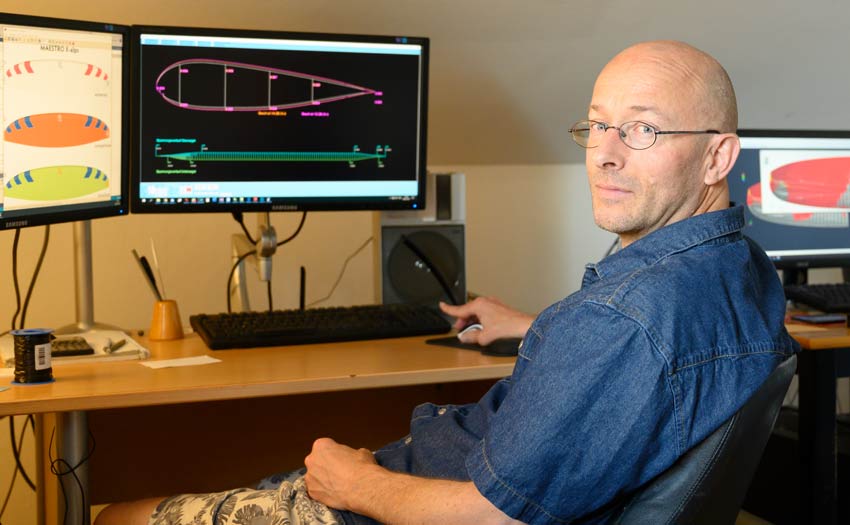
Q&A: Hannes Papesh, Designer and owner
People have been waiting for this wing from you. What were your design goals?
I wanted to follow my tradition in the high-B class. After the Carbon, Artax, Mamboo, Mentor 1, 2 and 3, the Maestro is the next one in that line. With this long line of predecessors, the wing’s class is well defined.
The glider has a lot of feel in the brakes but still doesn’t move around too much – how do you do that? Experience! The Maestro is a development of the Phi Tenor / Symphonia with similar aerofoils, just increasing the feedback. So it offers a reasonable step up for pilots looking to progress.
If we were sharing a lift together what would your 30-second pitch be to sell me the wing?
I’m no salesman. I just try to design wings that sell themselves. You can never build a wing that is loved by everyone. But I know how to create really successful products, enjoyed by many people. The Maestro is one of those. We are very relaxed. People just have to fly the wing. We can use our time in the lift to talk about something else: families, kids, Brexit!
There are some interesting zig-zags in the seams of the 3D shaping, and also the C-tabs are positioned in a zig-zag pattern. Why?
The problem with normal 3D shaping is that it creates notches in the seams, caused by the stitching shrinking. There is not enough tension span-wise to stretch the seams. But there is enough tension front-to-back, so diagonal seams use this force. The result is a cleaner shape. Every disturbance in the aerofoil is negative, so we try to make it as clean as possible. On the C-tabs, our philosophy is to be as clean and simple as possible. During the final development stage we found we could remove one C-tab and two Ds, so we did.
We know you are working on a new C-class wing. How is that progressing?
Mike [Küng] loves the latest proto. It seems to be just the right step up from the Maestro. We hope to be able to present it at the Coupe Icare.
What else can we expect in the future from Phi?
We want to play in all disciplines: all class of wings, rescues, maybe harnesses. But we want to stay very streamlined. Just offering outstanding products that sell on their own. So far we are extremely successful with that strategy.
Are there any specific points you would like to make about the Maestro?
Even as rather a ‘low-B pilot’ myself, I love flying the Maestro. So on the basis of my own experience, I think the Maestro shows the direction for the future: more stability, less stress, more balance, more trust and more fun. We have to try hard to keep paragliding developing in that direction. Easy-to-fly wings with exceptional performance.
Originally released in Cross Country Issue 204 (Oct 2019)


